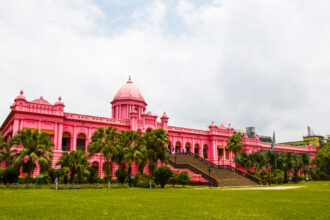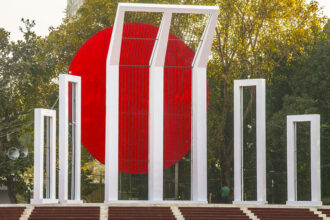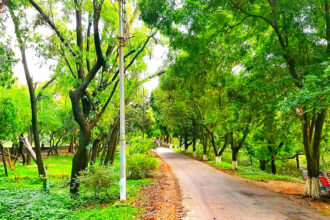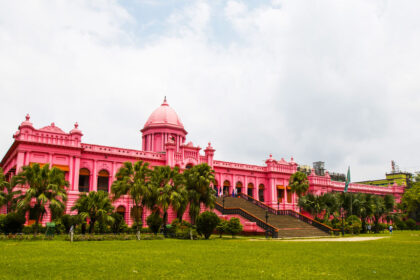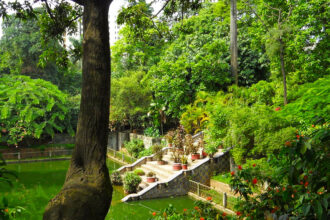The National Martyr’s Monument, also known as the Jatiyo Sriti Shoudho, is a symbol of the Bangladesh Liberation War located in Savar, a suburb of Dhaka, Bangladesh. The monument stands as a tribute to the martyrs who sacrificed their lives for the country’s independence during the war against Pakistan in 1971.
The monument was designed by Syed Mainul Hossain, an architect who won an international competition held in 1978 for its design. The monument’s architecture represents the struggles and sacrifices of the people who fought for the country’s freedom. It comprises seven triangular-shaped structures that ascend to form a peak, symbolizing the triumph of the human spirit over tyranny.
The monument has seven main pillars, each of which symbolizes the seven stages of the Bangladesh Liberation War. The monument’s base is surrounded by a beautiful garden, and the site includes a museum that showcases photographs, documents, and artifacts from the war.
The National Martyr’s Monument is an essential part of Bangladesh’s national heritage and has become a popular destination for visitors from around the world. The monument is also the site of several significant events, including the annual Independence Day celebration and the National Mourning Day on August 15, which marks the assassination of Bangladesh’s founding father, Sheikh Mujibur Rahman.
The monument serves as a poignant reminder of the sacrifices made by the people of Bangladesh to secure their freedom and stands as a testament to their unwavering spirit and determination.

- History and Significance: The National Martyr’s Monument was designed by architect Syed Mainul Hossain and was completed in 1982. It was built to honor the memory of the millions of people who sacrificed their lives during the Bangladesh Liberation War of 1971. The monument serves as a tribute to the brave soldiers and civilians who fought for the country’s independence. The monument is also significant because it marks the site where Pakistani soldiers killed over 1000 Bengali intellectuals during the war. The monument serves as a reminder of the atrocities committed during the war and the sacrifices made by the people of Bangladesh.
- Products and Shops: There are several shops near the National Martyr’s Monument that sell souvenirs and memorabilia related to Bangladesh’s independence struggle. Visitors can purchase books, posters, and other items related to the country’s history and culture.
- Local Cuisine: There are several food stalls and restaurants near the National Martyr’s Monument that serve traditional Bangladeshi cuisine. Visitors can try local delicacies such as biryani, kebabs, and samosas.
- Exhibits: The National Martyr’s Monument features several exhibits related to Bangladesh’s independence struggle. Visitors can see photographs, documents, and artifacts related to the war and the country’s history.
- Guided Tours: Guided tours of the National Martyr’s Monument are available for visitors. The tours provide a detailed explanation of the monument’s history and significance and are led by knowledgeable guides.
- Photography Rules: Photography is allowed inside the National Martyr’s Monument. However, visitors are advised to be respectful and refrain from taking selfies or using flash photography.
- Nearby Attractions: There are several other attractions near the National Martyr’s Monument that visitors can explore. These include the National Memorial, the Bangabandhu Safari Park, and the Jahangirnagar University.
- Recommended Sightseeing Time: Visitors can spend around 1-2 hours at the National Martyr’s Monument, depending on their level of interest in the exhibits and history.
- How to Get There: Visitors can take a bus or a taxi from Dhaka city center to reach the National Martyr’s Monument in Savar.
Time of visit to National Martyr’s Monument
| Details | |
| Location | Savar |
| Address | Nabinagar – Aricha Hwy, Savar Union 1344 |
| Hours | 10:00 AM- 6:00 PM |
| Entry Fees | Free of Cost |


